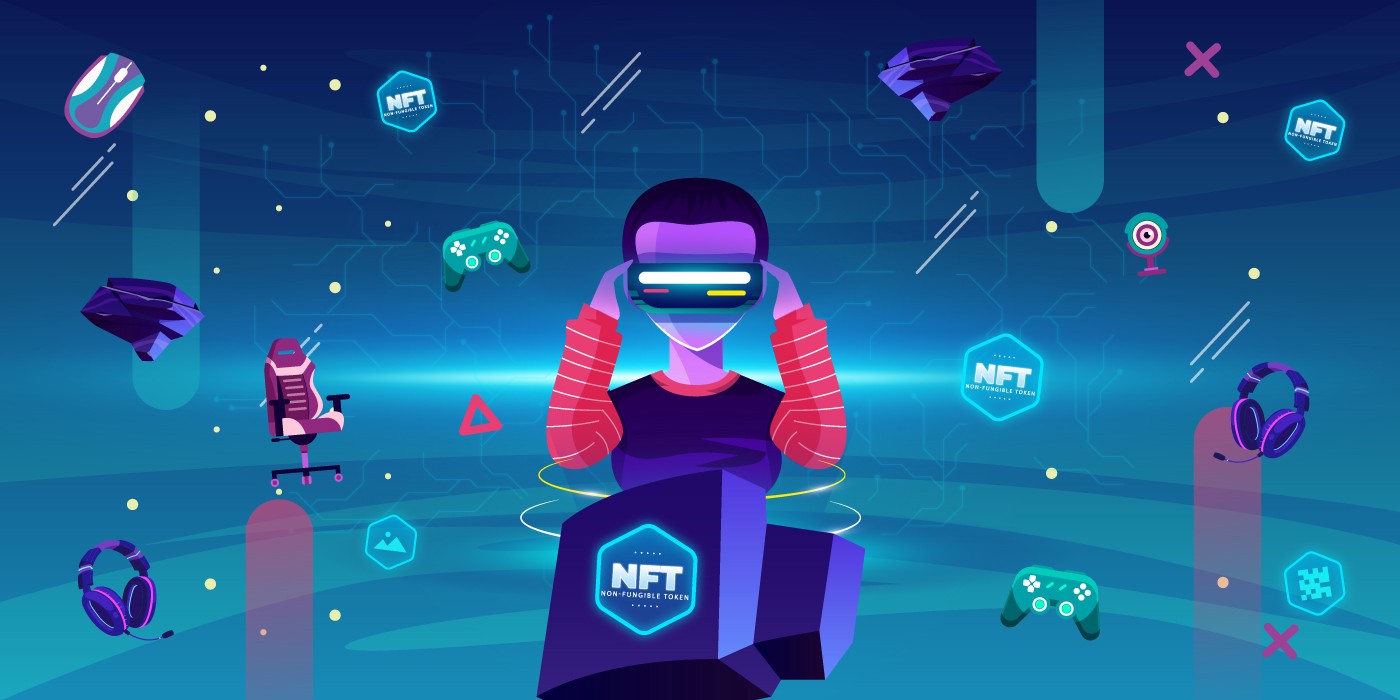Online gaming has assumed a new form with the introduction of Metaverse and NFTs, which any game enthusiast would like to explore. The retail, healthcare, industrial, and educational sectors all use Metaverse, and it has a sizable online gaming community.
The main difference between traditional online game development and metaverse NFT game development is the use of cutting-edge technologies to create a 3D virtual world that can be viewed in 360 degrees and gives users a realistic sense of performing different tasks inside the virtual world in the form of avatars.
The world has long considered “gaming” to be a passive activity and a kind of leisure. The passive pastime is increasingly viewed as a profitable job alternative and expanding investment possibility. However, with the rise of cryptocurrency and blockchain technology as well as the launch of Play-to-Earn games. Gamers are finding new, creative methods to turn their passions into cash as the Play-to-Earn sector anticipates reaching a worth of $2.8 billion in the next six years.
Because they combine the two things that everyone desires in life-enjoyment and income-play-to-earn (P2E) games are a recent and quickly growing phenomenon in the gaming industry.
According to predictions, the market for play-to-earn NFT games would increase from USD 755 million in 2021 to USD 3618.4 million by 2028, with a CAGR of 21.3% between 2022 and 2028. Players are rewarded with in-game assets as a result of engaging in the in-game ecosystem and adding value for both other players and the NFT game development companies.
These incentives take the form of in-game things like skins, NFTs, virtual land, tokens for virtual currencies, and weapons. Because these games are decentralised, users may buy, trade, and sell these in-game things for real money outside of the game’s virtual setting. As a result, the gaming industry has experienced a dramatic transformation from its previous model, which restricted in-game material to centralised systems that could not be shared with other parties.
Various Factors:
Because of the following factors, play-to-earn games are poised to revolutionize and dictate the rate of industry growth:
Growing acceptance of NFTS
One of the attractions of NFT gaming is that it creates unique, limited tokens that can be traded for other non-fungible tokens in a decentralised digital ledger based on blockchain technology. The ability to trade, create, and use NFTs within a game while metaverse development companies create smart contracts that specify the guidelines for the NFTs used offers players true ownership. In the future, as tokenization gains prominence, play-to-earn games will become more prevalent and may even take the place of traditional games as the better experience.
Immersive Experience
Games that players may play to gain rewards offer a more complete and involved experience. In conventional gaming, the player is limited to playing inside the bounds established by the game designers. Play-to-Earn games, on the other hand, provide players the chance to win prizes by taking part in the actual game. As well as making gaming more personalised, this encourages players to keep playing.
Transparency and Genuine Ownership
Blockchain-based games by their very nature are decentralised and transparent. It allowing for equal participation in game decisions and the ability to shape the game’s future development. In addition, players still own all of the digital assets they possess, as opposed to traditional games where the game developer controls the whole in-game economy.
Increased Earning Potential
Play-to-Earn games have the potential to bring in money for both players and game producers. In contrast to traditional gaming, where players must pay a one-time charge to access a game. The Play-to-Earn games let players to make in-game purchases or micro-transactions that directly fund the game’s growth. There is no reason why this strategy couldn’t also be effective for other game kinds. As it has already been demonstrated with free-to-play mobile games. Additionally, creators may take part in every step of the process, from creating new assets to determining their values, and can even profit from secondary markets for their creations (in the form of NFT royalties).
Building Community
These games have the ability to foster a sense of camaraderie among participants. With conventional gaming, players are frequently cut off from one another and only communicate with one another via virtual characters. While collaborating to achieve shared objectives, players can establish stronger personal connections with one another when playing Play-to-Earn games. This could result in long-lasting relationships and even actual meets.
Even while play-to-earn games are still relatively new, they have already had a significant influence on the gaming industry. Nearly every day, next-gen technology supports the significant evolution of these games. P2E games will keep players engaged and build anticipation for years, influencing the direction of the sector.
Conclusion
New prospects for entertainment and cash generation have emerged as the trend of Metaverse NFT game production gathers pace. Both game developers and gamers may benefit from it.


